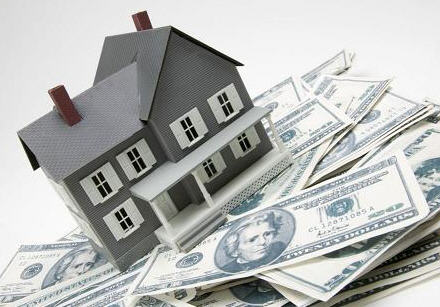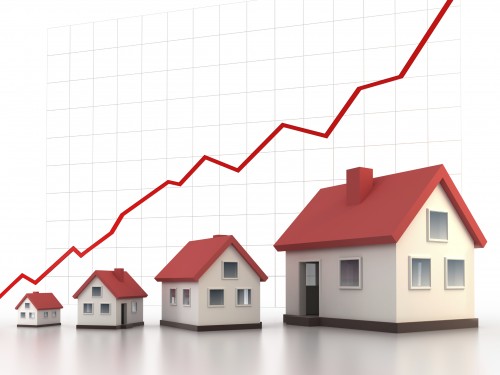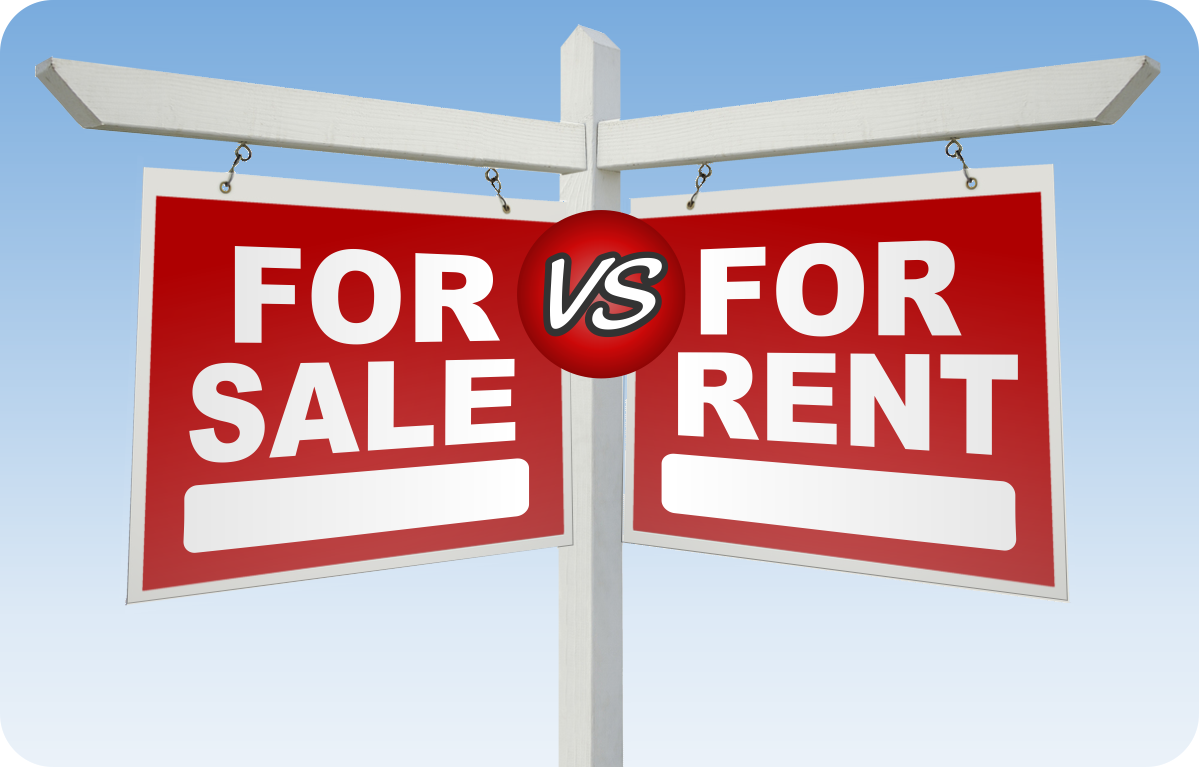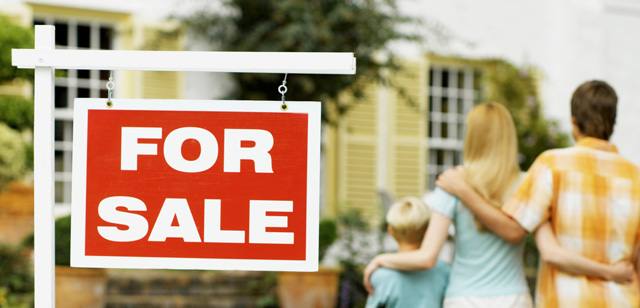Home Fire Safety Tips for the Holidays
December 22nd, 2015Here are some seasonal home fire safety tips:
Deciding When to Sell
January 30th, 2014
Is it a buyer’s or a seller’s market?
When there are lots of people looking for homes but not many for sale, this is called a ‘seller’s market’, because the seller has something everybody wants. When there are more homes for sale and not many people buying them, this is called a “buyer’s market” because buyers have more power of choice. A REALTOR® is the best person to consult about this.
How quickly do you need to sell your home?
In a seller’s market, top price and a fast sale can go hand-in-hand. In a buyer’s market, more sellers are competing for your potential buyer. If you have to sell right now, you may wish to lower your asking price a bit to speed up the sale. REALTORS® are masters at figuring the price-to-listing ratio and know how to attract offers without going unnecessarily low.
Seasonality – Do home sales get frostbite?
It’s true. Winter sales tend to be slower and spring sales are more brisk. Regardless, there are always people looking to buy and seasonality is only one of many factors to consider. If you’re also buying a home. In this case, you don’t really have to worry about playing the market. If you sell your existing home for a ‘low’ price, you’re probably also buying at a low price. If you are upgrading to a larger home, this actually works to your advantage. Imagine when your bigger home is on the upswing. If you’re downsizing from a bigger home to a smaller home or a condo, you need to pay a bit more attention to the market.
Buy first or sell first? The eternal question
Many people are able to time their sale and purchase so they happen on the same “closing date.” Buyers can make their offer “conditional’ on the sale of their existing home, to make sure they’re not left paying for the upkeep of two homes. When selling, you can try to extend the “closing period” to give yourself more time to find your next home. REALTORS® are very skilled at this sort of negotiation and can make your transitional life a lot easier.
If you find your new dream home before you’ve even started to sell your old one.
Talk to your existing mortgage lender. You may be able to arrange “Bridge Financing.” This is when your lender (the bank) is confident your existing home will sell quickly and they agree to lend you the down payment for your new dream home.
Find out more on this article by visiting www.ereb.com
How to Increase Your Home’s Value
January 10th, 2014Before you begin any value-increasing projects, remember not to raise the value of your property too far above others in the neighborhood. People who want expensive homes shop exclusively in pricier neighborhoods. A good rule of thumb: keep the value of your property within 15 to 20 percent of your neighbors’.
- Project (average cost recouped, national) according to Realtor Magazine:
- Minor kitchen remodel (88%)
- Bathroom remodel (85%)
- Major kitchen remodel (81%)
- Family room addition (80%)
- Deck addition (77%)
- Master suite (75%)
- Attic bedroom (74%)
- Siding replacement (73%)
- Window replacement (69%)
- Home office (55%)
Projects that may increase your home’s value include: Jacuzzi (4 jets or more); permanent hot tub; in-ground pool with nice deck area; security system; sprinkler system; substantial out buildings such as a two-car garage or finished workshop; and vaulted or trey ceilings. Think twice about the following projects however, as they may not add value to your house: above-ground pool; ceiling fans; garden pond; and light fixtures.
Some tips when attempting value-increasing remodeling:
- Remodel with mass appeal in mind. Potential buyers are usually attracted more to neutral, mainstream design.
- Don’t go cheap when it comes to construction. Use durable, quality materials. If you’re a do-it-yourselfer, honestly evaluate your ability to do it right.
- Don’t remodel in a different style from the rest of the house. Additions and improvements that look “tacked on” may detract from a home’s appeal.
- Turning a bedroom into a bathroom is a mistake – it reduces the number of bedrooms, a chief selling point.
- Don’t do a $30,000 kitchen remodel in a $100,000 house – unless you plan to continue living there. It is a waste of money.
Make sure the outside of your home is spic-and-span. Clean out the gutters. Wash the windows and remove cobwebs and bugs. Trim the hedges, cut and edge the lawn, sweep the sidewalks and driveway. Plant some colorful flowers out front.
You may want to add to or improve your landscaping while you’re at it. According to a study conducted by Money Magazine, landscaping may be the best investment to improve a home’s value. The study found that well-planned, attractive landscaping was estimated to have an actual recovery rate 100 to 200 percent higher than a kitchen or bathroom renovation.
2013 Sales Up 8% in Robust Local Housing Market
January 10th, 2014
Edmonton, January 6, 2014: Sales of residential property through the Edmonton Multiple Listing Service® (MLS®) System in 2013 in the Edmonton CMA were almost eight percent higher than in 2012. From 2011 to 2012 the number of sales increased 6.2%. There were 17,055 residential sales reported in 2013 as compared to just 15,812 in 2012.
Sales were up in all residential categories with 10,487 SFDs sold in 2013 (up 3.4%) along with 5,059 condominiums (up 14.7%) and 1,144 duplex/rowhouses (up 18.2%). First-time buyers accepted the condo lifestyle as a way to get into the housing market. Compared to 2012, the percentage of SFDs sold dropped from 64% to 61.5% of total sales while condo sales increased from 28% to 30%.
The higher sales numbers were driven by the strong local labour market, continuing low mortgage rates, and a stable pricing environment. The 12-month, all-residential average price in 2013 was $350,208, a modest 2.95% increase over the 2012 price of $341,891. Median prices increased from $331,000 from $323,000, only a 2.48% lift, indicating that there was increased activity at the mid-market price point this year.
“REALTORS® report that there has been a shortage of lower-priced homes all year which has pushed value conscious buyers up-market or into condos,” said REALTORS® Association of Edmonton, President Greg Steele. “New home builders are trying to fill the void by building more condos and single family homes at lower price points.”
The all-year sales-to-listing ratio was 69% with average day-on-market at 53 days. The active market was highlighted by a year-end inventory of just 3,049 properties: a drop of 1,000 from the month previous.
During the month of December, the price of a single family detached property rose 4.4% from $405,826 in November to $423,544 in December. Condo prices dropped 2.4% in December to $234,967 while duplex/row house prices shot up 9.8% to $358,978 (following a marginal uptick the month previous). Overall, the average all-residential prices was up just 1.1% to $350,208 when compared to the previous month. December sales (adjusted for late reported sales) were: SFD – 471, condo – 271, duplex/row house – 45, and total residential sales 805.
“Now that the hectic holiday season is over, listing and sales activity will pick up as it always does,” said Steele. “Buyers are urged to take advantage of the low mortgage rates while market conditions are favourable and to consult with their REALTOR® about the advantages of a resale home or condo in any of the communities in or around Edmonton.”
Real Estate Association of Edmonton: http://www.ereb.com/News&Events/LatestMarketStatistics.html
Buying VS Renting Your Home
December 16th, 2013Is now the right time for you to buy a home? You have many options to consider and choices to make. Buying a home is a big responsibility, financially and emotionally, but most people want to own a home. Home ownership often is referred to as “the American dream.” Why is it so special? Among the reasons: Real estate often is an excellent investment, perhaps the number one source of wealth-building for families.
Owning a home has many benefits. When you make a mortgage payment, you are building equity – and that’s an investment. Owning a home also qualifies you for tax benefits that may assist you in dealing with your new financial responsibilities – such as homeowners’ insurance, real estate taxes, and upkeep – which can be substantial. But given the freedom, stability, and security of owning your own home, they are definitely worth it! Owning your own home also can be a great source of pride and stability.
But home ownership may not be for everyone. It’s a big financial commitment – starting with the initial shock of your purchase (including a “down payment” and fees paid to a real estate agent, the lender and others) followed by years of monthly mortgage payments, real estate taxes, property insurance and maintenance costs. When you decide to purchase a home, you accept responsibility for paying for these expenses. They are additional costs to your monthly mortgage payment and should be included in your budget estimates: . Property Taxes and Special Assessments . Home/Hazard Insurance . Utilities . Maintenance . Home Owner Association (HOA) Fee if applicable. One of the advantages of renting is being generally free of most maintenance responsibilities and the flexibility of moving almost as soon as you decide. But by renting, you lose the chance to build equity, take advantage of tax benefits, and protect yourself against rent increases. Also, you may not be free to decorate without permission and may be at the mercy of the landlord for your housing needs. There are many considerations in choosing between renting and buying:
- Do you want to spend several years in a house and in a neighborhood?
- Do you enjoy lawn and garden work?
- Might you need to move suddenly to care for family?
- Do you want to keep your assets accessible in the bank, or do you want to invest long-term in a home?
There are tax advantages to homeownership in both the short and long terms. The mortgage interest and real estate taxes are tax deductible, which allows you to subtract part of your housing related expenses from your taxable income, which could reduce your tax bill. In many cases, the amount of money a renter spends on rent can be about the same as or less than the amount a homeowner spends on a mortgage. With the tax benefit for homeowners, the savings can be significant.
Home Inspections
November 29th, 2013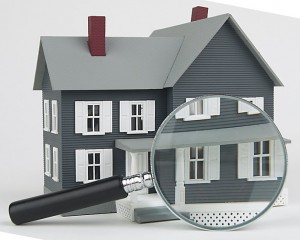 If you’re buying or selling a home, it’s important to understand what a home inspection entails and how it affects the sale or purchase of a house.
If you’re buying or selling a home, it’s important to understand what a home inspection entails and how it affects the sale or purchase of a house.
What Is a Home Inspection?
A home inspection is an objective visual examination of the structure and systems of a home by a neutral third party. Basically, it shows you what’s wrong with the property and if it is serious enough to prevent a sale. (Note: An inspection does not concern code violations and therefore does not guarantee that the home is free of them.)
The three main points of the inspection are to evaluate the physical condition of the home, identify items in need of repair or replacement, and estimate the remaining useful life of the major systems, equipment, structure and finishes.
An inspector cannot report on defects that are not visible, such as defects hidden behind finished walls or beneath carpeting, and inaccessible areas. Seasonally inoperable systems (swamp coolers, air conditioning, furnaces) will not be turned on during the inspection.
Hiring an Inspector
To hire an inspector, get recommendations from your Realtor, or from friends and family. You can also find home inspectors in the phone book under “Home Inspection Services.” When interviewing inspectors, be sure to ask for references and memberships in professional associations. Find out about the inspector’s professional training and experience.
It’s a good idea to be present during the inspection for a few reasons: you can ask the inspector questions during the inspection, the inspector will have the opportunity to point out areas of potential trouble, and many inspectors also will offer maintenance tips as the inspection progresses.
Making Suggested Repairs
The seller is not required to make any repairs or replacements. However, the buyer can use the inspection report as a negotiating tool. For instance, if certain repairs or replacements are made, the buyer might offer to pay more, or if they’re not, the buyer can bid lower.
Costs and Time Involved
The inspector’s most important priority is accuracy, and accuracy takes time. The chances of mistakes are more likely if the inspector rushes through. Your inspection may take between two and five hours. Older homes take longer than newer ones.
Expect your inspection to cost from $200-$500 depending on size. It may be one of the most important investments you make when buying a home.
Halloween Safety: There’s No Trick To It!
October 27th, 2013
The observance of Halloween, which dates back to Celtic rituals thousands of years ago, has long been associated with images of witches, ghosts, devils and goblins. Over the years, Halloween customs and rituals have changed dramatically. Today, many of the young and youngatheart take a more lightspirited approach. Glowing skeletons and lighted Jack O’ Lanterns decorate homes, while children dressed in all kinds of costumes begin flocking out onto neighborhood streets in search of treats. Make this year’s holiday extra safe by following these safety tips on costumes, treats, decorations and more!
Costumes:
- When purchasing costumes, masks, beards and wigs, look for flame-resistant fabrics such as nylon or polyester, or look for the label “Flame Resistant.” To minimize the risk of contact with candles and other fire sources, avoid costumes made with flimsy materials and outfits with big, baggy sleeves or billowing skirts.
- Costumes should fit well and not drag on the ground to guard against trips and falls. Children should wear well-fitting, sturdy shoes. Oversized high heels are not a good idea.
- Purchase or make costumes that are light, bright and clearly visible to motorists.
- Apply a natural mask of cosmetics rather than have a child wear a loose-fitting mask that might restrict breathing or obscure vision. If a mask is used, however, make sure it fits securely and has eyeholes large enough to allow full vision.
- For greater visibility during dusk and darkness, decorate or trim costumes and candy sacks with reflective tape that will glow in the beam of a car’s headlights.
- Reflective tape is usually available in hardware, bicycle and sporting goods stores.
Decorations:
- Keep candles and Jack O’ Lanterns away from landings and doorsteps where costumes could brush against the flame.
- Remove obstacles from lawns, steps and porches when expecting visitors.
- Wet leaves should be swept from sidewalks and steps.
- Restrain pets so they do not inadvertently jump on or bite a trick-or-treater.
- Small children should never carve pumpkins. Children can draw a face with markers. Then parents can do the cutting.
- Votive candles are safest for candle-lit pumpkins.
How to Increase Your Home’s Value
September 29th, 2013
There is really only one reason to try to increase the value of your home: if you’re trying to sell it. If you’re not, deliberately increasing your home’s value most likely will increase your tax bill as well. There are ways to increase your home’s value for resale that range from the very expensive (major remodels and additions) to free (tidying up the front yard). We’ll look at the whole range, noting how much value is added when possible.
Before you begin any of these projects, it is important that you do them with the following in mind: you do not want to raise the value of your property too far above others in the neighborhood. Why? Because people who want expensive homes will shop exclusively in higher-value neighborhoods. If you own the “best house” in the neighborhood, it is unlikely you will recoup whatever investment you’ve made. A good rule of thumb: keep the value of your property within 15 to 20 percent of your neighbors’.
The following figures appeared in the November, 2001 issue of Realtor Magazine. They list the top ten remodeling projects undertaken to increase a home’s value in the United States and what percentage of your remodeling investment is recouped at resale.
- Project (average cost recouped, national):
- Minor kitchen remodel (88%)’
- Bathroom remodel (85%)
- Major kitchen remodel (81%)
- Family room addition (80%)
- Deck addition (77%)
- Master suite (75%)
- Attic bedroom (74%)
- Siding replacement (73%)
- Window replacement (69%)
- Home office (55%)
These are national averages, so in your area, the figures may be lower or higher. To explain, if you spend $10,000 on a minor kitchen remodel, you will be adding $8,800 to the value of your house. Remember that it’s a tricky business, trying to add value to your home. What seems to be value to you may not appear that way to any given prospective buyer.
Projects that may increase your home’s value include: Jacuzzi (4 jets or more); permanent hot tub; in-ground pool with nice deck area; security system; sprinkler system; substantial out buildings such as a two-car garage or finished workshop; and vaulted or trey ceilings. Think twice about the following projects however, as they may not add value to your house: above-ground pool; ceiling fans; garden pond; and light fixtures.
Some tips when attempting value-increasing remodeling:
- Remodel with mass appeal in mind. Potential buyers are usually attracted more to neutral, mainstream design.
- Don’t go cheap when it comes to construction. Use durable, quality materials. If you’re a do-it-yourselfer, honestly evaluate your ability to do it right.
- Don’t remodel in a different style from the rest of the house. Additions and improvements that look “tacked on” may detract from a home’s appeal.
- Turning a bedroom into a bathroom is a mistake – it reduces the number of bedrooms, a chief selling point.
- Don’t do a $30,000 kitchen remodel in a $100,000 house – unless you plan to continue living there. It is a waste of money.
- If you don’t sell, there are improvements that actually reduce your tax bill. Qualifying improvements are those that increase your home’s value or prolong your home’s life, including: a fence, driveway, a new room, addition, swimming pool, garage, porch or deck, built-in appliances, insulation, new heating/cooling systems, a new roof, landscaping, etc.
If you don’t have the kind of money it takes for even minor remodeling, there are low-cost ways to increase your home’s value. At the very least, the following things will make your home more attractive and inviting to prospective buyers.
Make sure the outside of your home is spic-and-span. Clean out the gutters. Wash the windows and remove cobwebs and bugs. Trim the hedges, cut and edge the lawn, sweep the sidewalks and driveway. Plant some colorful flowers out front. The reason for these small things is simple: If two similar homes in the same are area are both for sale, the one with the cleanest and most appealing front yard will sell first.
You may want to add to or improve your landscaping while you’re at it. According to a study conducted by Money Magazine, landscaping may be the best investment to improve a home’s value. The study found that well-planned, attractive landscaping was estimated to have an actual recovery rate 100 to 200 percent higher than a kitchen or bathroom renovation.
Making Sure You’re Ready to Buy
September 15th, 2013Make Sure You’re Ready to Buy
If you’re thinking of buying a home, you’ve come to the right place. This web site can turn you into a house-hunting master. But before we jump right in, you have to make sure three things are ready. You, your bank account and the real estate market.
Are you ready? Be sure.
Few joys can match the pride of owning the roof over your head, but you will have to make some sacrifices. There’s the obvious financial responsibility, but your home will also require constant care. That’s what real pride of ownership is all about.
Is your bank account ready? Check it twice.
Your first home will be the biggest financial obligation you’ve ever faced. You should already be an experienced saver and good at managing debt like student loans or credit cards. Ideally, you’ve also saved up some money for a nice down payment. Talk to your financial institution about the Home Buyers Plan too. Our Next Step will give you a crystal clear picture about how much you can afford.
Is now a good time to buy? Here’s the hottest market tip you’ll ever get.
Markets go up, markets go down and even the smartest experts can’t accurately predict when a market will peak or bottom out. The good news is if you’re buying a home as a long-term investment (and for long-term enjoyment), you’re protected from short-term changes in the market. Over time, real estate has almost always increased in value.
All you have to do is pick a home that meets the needs of you and your family. Then you’ll enjoy living in your investment as it grows in value. A home is one of the best financial decisions you can make and it’s tough to live in a stock portfolio!
View more information on the EREB.com site http://www.ereb.com/BuyingAHome/ReadyToBuy.html



